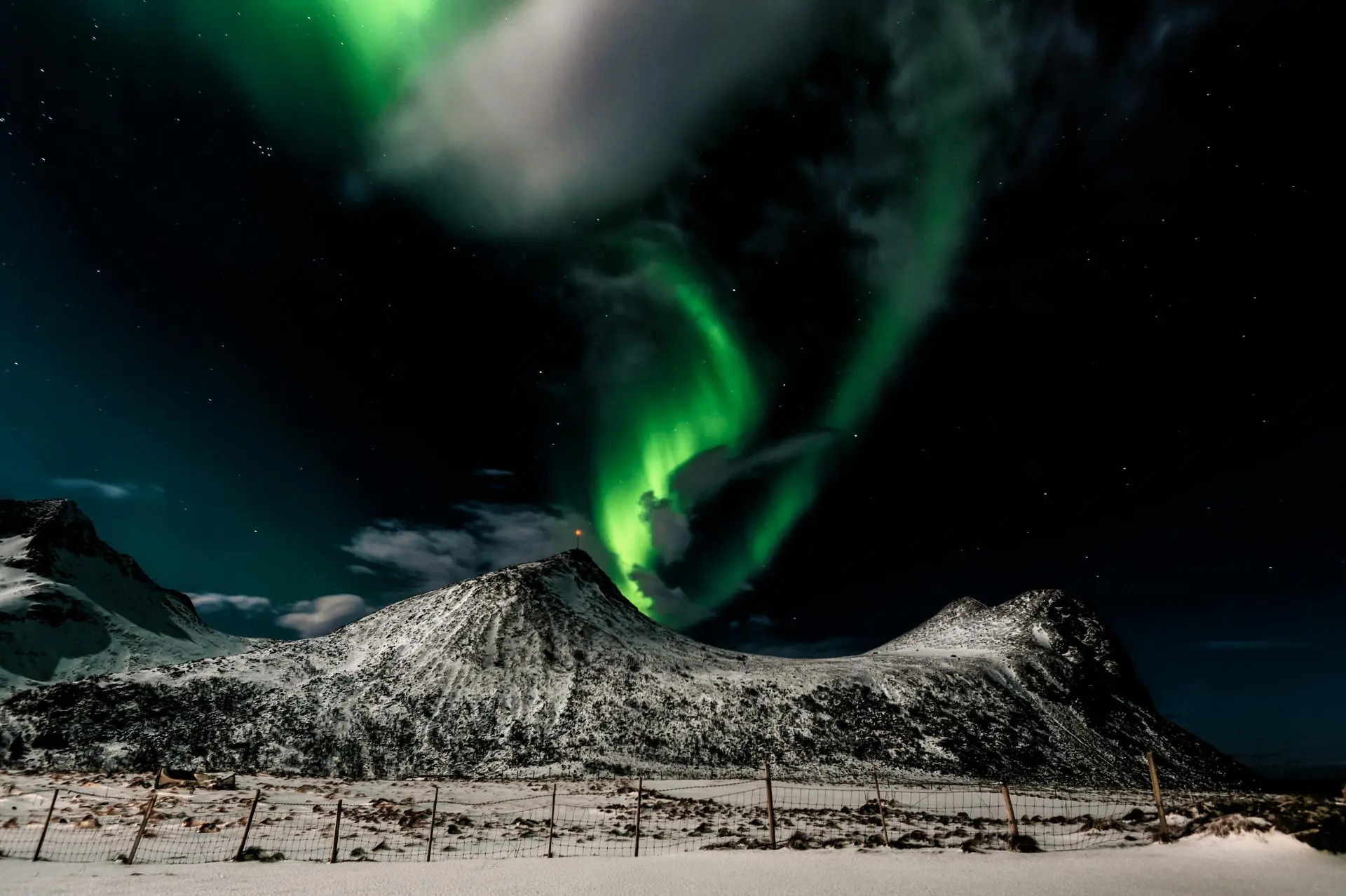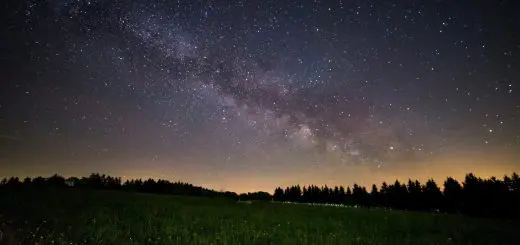The Advanced Engineering of the Ancient Incas

Looking for more amazing products? Check out our online store and explore our collection here! Happy shopping!
Before diving in, please note: This post is for informational purposes only. If you’d like to know more about how we approach topics, feel free to check out our friendly Disclaimer Page.
Hey there, amazing readers! 
We’re committed to delivering quality posts, and your support (even just sticking around despite the ads) means everything to us. So, bear with us, and thanks for helping us keep the good vibes rolling. Now, on to the fun stuff!
TRANSLATE BUTTON AT THE END OF THE ARTICLE
A Quick Overview
The ancient Inca civilization stands out as one of the most impressive examples of engineering excellence in human history.
Nestled among the peaks of the Andes, the Incas crafted a society that thrived not just through conquest, but through remarkable ingenuity and a deep understanding of the environment.
Their contributions to architecture, agriculture, and infrastructure continue to inspire awe even today.
Let’s dive into the multifaceted aspects of Inca engineering that make it so extraordinary.
The Genius of Inca Engineering: An Overview
When we think about ancient civilizations, we often picture grand monuments and sprawling cities.
The Incas, who flourished from the early 15th century until the Spanish conquest in the 16th century, were no exception.
They didn’t just build; they innovated.
Their engineering was deeply embedded in their culture and their reverence for the natural world.
What set the Incas apart was their ability to adapt their engineering solutions to the challenges of their mountainous environment.
They employed local materials and techniques that harmonized with the landscape, a kind of sustainable engineering that resonates even today.
From their terraced farming to their intricate road systems, every decision was made with practicality and the needs of the community in mind.
Incas did not have written records, but they left behind a legacy that speaks volumes about their ingenuity.
Stone structures, agricultural terraces, and extensive road networks testify to their advanced skills.
They were masters of stone masonry, capable of fitting massive stones together without mortar, a technique that still baffles modern engineers.
The Incas also excelled in resource management, particularly in water distribution and agricultural practices.
Their hydraulic engineering facilitated irrigation in arid regions, allowing them to cultivate crops in places where it seemed impossible.
Their architectural style was not only functional but also symbolic.
Many structures aligned with astronomical events, reflecting a sophisticated understanding of the cosmos.
This blend of practicality and spirituality showcases a unique worldview that continues to fascinate historians and engineers alike.
Awe-Inspiring Structures: The Inca Architectural Marvels
The Inca legacy includes iconic structures that have stood the test of time.
Cusco, the historic capital, was a hub of architectural brilliance.
The Sacsayhuamán fortress, built with massive stones, showcases their ability to create robust defensive structures.
Each stone was carved and placed with precision, highlighting their advanced masonry skills.
Machu Picchu is perhaps the most famous Inca site, attracting visitors from around the globe.
Perched high in the Andes, it combines breathtaking views with ingenious architecture.
Terraces, buildings, and water channels were integrated seamlessly into the landscape, proving that beauty and functionality can coexist.
Other notable structures include the Coricancha, or Temple of the Sun, which was the most important temple in the Inca Empire.
Its walls were once covered in gold, a testament to their wealth and craftsmanship.
The irrigation systems that accompanied these structures were equally impressive, channeling water for both agricultural and ceremonial use.
The Incas also had a knack for building durable roads and bridges that connected their vast empire.
They constructed the Inca Trail, which remains a popular trekking route today, reflecting their understanding of geography and travel.
In every structure, there’s an intrinsic connection to the land.
The Incas saw their buildings as part of the earth, not separate from it.
This philosophy influenced their construction methods and choice of locations, ensuring that their buildings blended into the natural landscape.
Road Networks: The Highways of the Ancient Andes
The Inca road system was nothing short of revolutionary.
Extending over 25,000 miles, it linked various regions of the empire, facilitating trade, communication, and military movement.
Imagine a network so extensive that it allowed for swift transport across challenging terrains!
These roads were ingeniously designed.
They traversed mountains, valleys, and even deserts, adapting to the natural contours of the land.
The Incas employed a technique known as "qollqa," using stone and earth to create resilient pathways that would withstand heavy use.
In addition to facilitating travel, the roads allowed the Incas to establish a relay system of runners called "chasquis." These speedsters carried messages, vital resources, and news across vast distances at astonishing speeds.
It was like an ancient postal service, ensuring that communication flowed seamlessly throughout the empire.
The road system also played a crucial role in the movement of armies.
During times of war, soldiers could quickly mobilize to defend their territory.
This strategic advantage helped the Incas maintain control over their vast empire.
Many of these pathways still exist today, helping modern hikers explore the stunning landscapes of Peru.
The routes take you through lush forests, past ancient ruins, and across rugged mountains, showcasing the brilliance of Inca engineering even centuries later.
Terracing Techniques: Farming the Steepest Mountains
The Incas faced a significant challenge when it came to agriculture, given the steep Andean mountains.
Their solution?
Terracing!
They transformed the challenging landscape into arable land by carving out flat steps along the mountainsides.
This innovative technique not only increased the amount of farmland but also helped with soil conservation and water management.
Each terrace acted as a mini-reservoir, capturing rainwater and allowing crops to thrive in otherwise inhospitable conditions.
The terraces were constructed with a sophisticated understanding of irrigation.
Channels directed water from streams, ensuring that crops received adequate moisture.
This careful planning meant they could grow a variety of crops, from potatoes to maize, even at high elevations.
The terracing system was not just functional; it also reflected their connection to the land.
The Incas believed in Pachamama, or Mother Earth, and their farming techniques honored this relationship.
Each step on the mountain symbolized their dedication to sustainability and respect for nature.
Today, many of these terraces remain, showcasing their agricultural ingenuity.
Fields of green contrast beautifully with the rocky mountains, reminding us of the Incas’ ability to adapt and thrive in challenging environments.
The Mysteries of Inca Stone Masonry Unveiled
One of the most captivating aspects of Inca engineering is their stone masonry.
The Incas constructed structures from massive blocks of stone, some weighing several tons.
What’s astounding is that they achieved this without the use of mortar—a feat that still puzzles modern architects!
The stones were precisely cut and fitted together, creating walls that have withstood earthquakes for centuries.
The technique they used involved shaping the stones to fit snugly against one another.
This clever design allowed the structures to flex and move during seismic events, preventing collapse.
Archaeologists believe the Incas used simple tools, like chisels made from harder stones.
Despite the lack of advanced technology, their craftsmanship was impeccable.
Many of their buildings, like those in Cusco and Ollantaytambo, showcase this extraordinary masonry.
The Inca walls are known for their distinctive trapezoidal shape, which provided both strength and aesthetic appeal.
The angles helped distribute weight evenly, making the walls more resistant to shifting.
Not only did their masonry serve practical purposes, but it also conveyed cultural significance.
Many structures were built to align with celestial events, echoing their deep connection to astronomy.
I find it fascinating how their engineering wasn’t just about function; it was also an expression of their beliefs and values.
Hydraulic Engineering: The Inca’s Water Management Skills
Water management was crucial for the Incas, especially in the arid regions of their empire.
They mastered hydraulic engineering, developing extensive systems for irrigation and water distribution.
This expertise allowed them to cultivate crops in areas that would otherwise be barren.
The Inca engineers constructed canals, aqueducts, and reservoirs to channel and store water.
These systems were carefully designed to minimize erosion and maximize efficiency.
They meticulously planned where to place these structures, considering the landscape’s contours and water flow.
The use of terraces also played a significant role in their water management.
By capturing rainfall and directing it to crops, the Incas enhanced their agricultural productivity.
This strategy was vital for sustaining their large population.
Interestingly, their water management systems also extended to urban areas.
They built fountains and drainage systems in cities like Cusco, ensuring a supply of fresh water for residents.
This attention to public health reflects their understanding of the importance of clean water in maintaining a thriving society.
Today, many of their hydraulic structures remain functional, a testament to the lasting impact of their engineering.
Visiting these ancient aqueducts, one can’t help but marvel at the ingenuity behind such designs.
The Sacred Valley: A Hub of Innovative Engineering
The Sacred Valley of the Incas is a treasure trove of engineering marvels.
This fertile area, located between Cusco and Machu Picchu, served as the agricultural heart of the empire.
The Incas transformed this valley through innovative farming techniques and advanced irrigation systems.
Terraces lined the hillsides, creating a patchwork of green fields that sustained the population.
The valley’s unique microclimate allowed for diverse crops, supporting a bustling economy.
The Incas understood the land’s potential and maximized it through careful planning.
In addition to agriculture, the Sacred Valley was home to significant religious and cultural sites.
The Incas constructed temples and ceremonial centers, such as Ollantaytambo and Pisac, showcasing their architectural prowess.
These structures often featured intricate stonework and were aligned with astronomical events.
Water management was also a priority in the Sacred Valley.
The Incas built canals and irrigation systems that directed water from the mountains to their fields.
This careful engineering ensured that crops received adequate moisture, even during dry spells.
The Sacred Valley continues to be a focal point for tourists and researchers alike.
Its blend of natural beauty and advanced engineering leaves a lasting impression.
I find myself captivated by the history and ingenuity that shaped this remarkable region.
Machu Picchu: A Testament to Incan Ingenuity
Machu Picchu, often referred to as the "Lost City of the Incas," epitomizes their architectural brilliance.
Nestled high in the Andes, this UNESCO World Heritage site is a stunning example of Inca engineering.
Its terraced slopes and stone structures reflect a deep understanding of the environment.
The site was carefully planned, with buildings arranged to harmonize with the landscape.
Each structure served a specific purpose, from temples to homes.
The Incas utilized local materials, ensuring that their constructions blended seamlessly into the natural surroundings.
Machu Picchu also showcases their advanced water management systems.
The Incas built channels and fountains to supply fresh water to the inhabitants.
This attention to detail highlights their understanding of hydraulic engineering.
The alignment of the structures with astronomical events is particularly fascinating.
The Intihuatana stone, often referred to as the "Hitching Post of the Sun," reflects their spiritual beliefs and knowledge of astronomy.
It’s amazing how they could connect their architecture with celestial phenomena.
Visiting Machu Picchu is like stepping back in time.
The breathtaking views and intricate stonework remind us of the ingenuity of the Inca people.
It’s a place that leaves a mark on everyone who walks its ancient paths.
Inca Bridges: Spanning Chasms with Grace and Strength
Inca bridges were yet another testament to their engineering prowess.
They built suspension bridges using natural fibers, allowing people to traverse the rugged landscapes of the Andes.
These bridges were essential for connecting remote communities and facilitating trade.
The Incas understood the importance of creating durable structures that could withstand the elements.
They often used a technique called "q’ampa," which involved twisting plant fibers together to create strong, flexible cables.
This innovative approach enabled the construction of long spans across deep canyons.
Many of these bridges were built without the use of nails or metal components.
Instead, the Incas relied on their knowledge of materials and physics, ensuring that the bridges could carry heavy loads without compromising safety.
Interestingly, some of these bridges remain in use today, a testament to their durability and design.
Walking across an ancient Inca bridge offers a thrilling experience, evoking a sense of connection to the past.
Inca bridges were not just functional; they were also a symbol of unity.
They connected diverse communities, facilitating the exchange of goods, ideas, and cultures.
This spirit of collaboration reflects the values of the Inca society.
Astronomy and Architecture: Aligning with the Stars
The Inca civilization had a profound connection to the cosmos.
Their architectural designs often reflected celestial events, demonstrating a sophisticated understanding of astronomy.
This alignment with the stars was not just for show; it held spiritual significance as well.
Many Inca structures were oriented towards the sun, moon, and other celestial bodies.
The Temple of the Sun in Cusco and the Intihuatana stone at Machu Picchu are prime examples of this astronomical alignment.
These sites were integral to their religious practices and agricultural cycles.
The Incas used the solstices and equinoxes to determine agricultural planting and harvesting times.
Their knowledge of celestial movements helped them make informed decisions about crop cycles, ensuring food security for their communities.
Observatories, such as those found in the Sacred Valley, were also part of their architectural legacy.
The Incas used these sites to study the stars and refine their agricultural practices.
Their ability to connect architecture with astronomy reflects a holistic worldview that permeated their society.
Visiting these ancient sites, one can’t help but feel a sense of wonder.
The Incas were not just builders; they were astronomers, farmers, and spiritual seekers.
Their architecture invites us to contemplate our own relationship with the cosmos.
The Role of Community in Inca Engineering Projects
Community played a vital role in the success of Inca engineering projects.
The Incas believed in collective effort, relying on the labor of their citizens to construct roads, terraces, and monumental buildings.
This sense of unity was essential for the prosperity of their society.
The Incas organized labor through a system called “mita.” In this system, citizens were required to perform a certain amount of labor for the state, often in exchange for food, shelter, and protection.
This communal work fostered a sense of belonging and shared purpose among the people.
Many engineering projects, like the construction of terraces and irrigation systems, required extensive collaboration.
Families and communities came together, pooling their skills and resources to create lasting structures.
It’s a beautiful example of how teamwork can lead to monumental achievements.
During festivals and ceremonies, the Incas celebrated their accomplishments, reinforcing the bonds of community.
These gatherings not only honored their engineering feats but also provided an opportunity for cultural exchange and social cohesion.
The sense of community worshipped by the Incas is a valuable lesson for us today.
Their achievements remind us that we can accomplish more together than alone.
I often reflect on how collaboration can lead to incredible results in our own lives.
Legacy of Incan Engineering: Lessons for Modern Times
The legacy of Incan engineering continues to influence modern practices.
Their innovative techniques in agriculture, water management, and architecture serve as valuable lessons for contemporary society.
Sustainability was at the core of Inca engineering.
They understood the importance of working with the natural environment rather than against it.
This principle is especially relevant today as we face environmental challenges.
Their terracing techniques can inspire modern farmers to maximize land use in challenging terrains.
Similarly, their advanced water management systems remind us of the importance of efficient resource allocation.
Architecturally, the Incas showcased how buildings can harmonize with the landscape.
This approach is particularly relevant in urban planning today, as we aim to create sustainable and aesthetically pleasing environments.
The Inca emphasis on community involvement also resonates strongly in today’s society.
Collaborative efforts can lead to innovative solutions and a sense of belonging.
Their story encourages us to work together to tackle challenges, whether in agriculture, infrastructure, or social issues.
In conclusion, the engineering achievements of the Incas are not just relics of the past; they offer timeless lessons on sustainability, community, and innovation.
Their legacy inspires us to approach our own challenges with creativity and collaboration, ensuring that we honor the incredible wisdom of those who came before us.
Conclusion
The advanced engineering of the ancient Incas showcases a civilization that thrived through ingenuity, collaboration, and a profound respect for nature.
From their awe-inspiring structures to their intricate road networks, the Incas left behind a legacy that continues to amaze us today.
Their ability to adapt to challenging environments and harness the resources around them serves as a guide for modern society.
As we explore their remarkable achievements, we can draw valuable lessons that resonate with our own lives, fostering a spirit of teamwork and sustainability that can guide us into the future.

The Enlightenment Journey is a remarkable collection of writings authored by a distinguished group of experts in the fields of spirituality, new age, and esoteric knowledge.
This anthology features a diverse assembly of well-experienced authors who bring their profound insights and credible perspectives to the forefront.
Each contributor possesses a wealth of knowledge and wisdom, making them authorities in their respective domains.
Together, they offer readers a transformative journey into the realms of spiritual growth, self-discovery, and esoteric enlightenment.
The Enlightenment Journey is a testament to the collective expertise of these luminaries, providing readers with a rich tapestry of ideas and information to illuminate their spiritual path.
Our Diverse Expertise
While our primary focus is on spirituality and esotericism, we are equally passionate about exploring a wide range of other topics and niches 

To ensure we provide the most accurate and valuable insights, we collaborate with trusted experts in their respective domains 
Our blog originally focused on spirituality and metaphysics, but we’ve since expanded to cover a wide range of niches. Don’t worry—we continue to publish a lot of articles on spirituality! Frequently visit our blog to explore our diverse content and stay tuned for more insightful reads.
Hey there, amazing reader! 
Check out our store here and take a peek at some of our featured products below! Thanks for being awesome!










